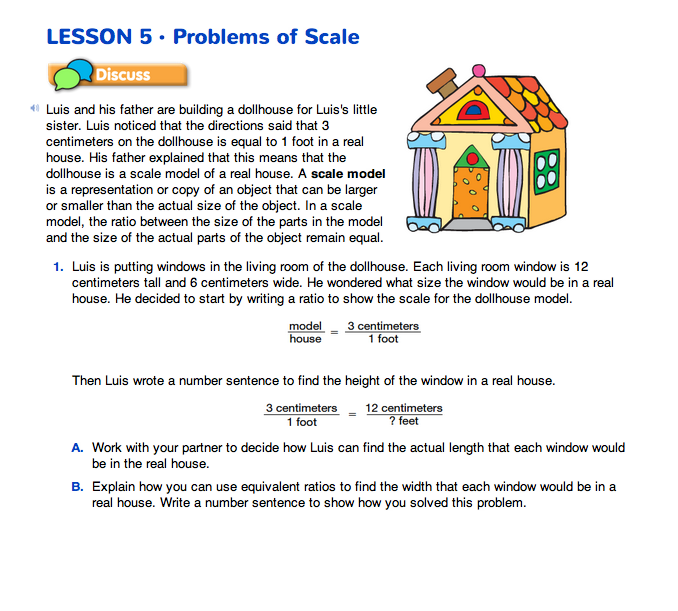Problems of Scale
Est. Class Sessions: 1–2Developing the Lesson
Part 2. Use Ratios to Solve Problems of Scale
Direct students to the Problems of Scale pages in the Student Guide. Read the opening vignette with students.
Ask:
Direct students to work with a partner and complete Questions 1A–B. These questions provide an opportunity to quickly review strategies for finding equivalent ratios. Ask several students to share their strategies with the class.
In Question 1A, students should see that there is a multiplicative relationship of times 4 between the numerator of 3 in the first ratio and the numerator of 12 in the second ratio. They can use this relationship to find the denominator in the second ratio (the length of the actual windows) by multiplying 1 foot × 4 = 4 feet. Students should also see that since every 3 cm represents 1 foot, if they divide 12 cm by 3 cm they will know how many feet are represented by 12 cm. 12 cm ÷ 3 cm = 4, so each window is 4 feet long in an actual house. Since this is a scale model, students can use different equivalent ratios to find that the width of an actual window will be 2 feet, for Question 1B.
See Figure 2 for possible solutions.













